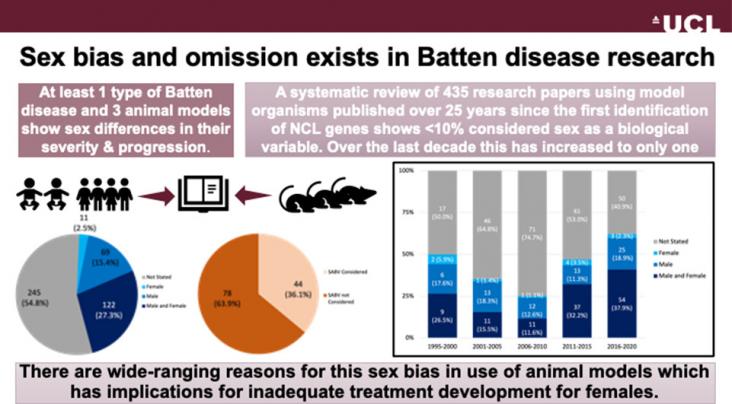This Article supports SDG 3 and 5 by demonstrating the need to better understand the roles that male partners play in encouraging or discouraging care-seeking behaviours during pregnancy and the postpartum period.
The Lancet Global Health, available online 11 October 2022, in press.
An Article in support of SDGs 3, 5, and 10, showing that effective cataract surgical coverage varies widely between countries, increases with greater income level, and is higher in men.

Batten Disease is a rare disease. This reviews highlights the existing sex bias and omissions in Batten Disease research.
This Personal View supports SDGs 3 and 13 by reviewing the ways that climate risks affect all aspects of the COVID-19 pandemic, including transmission, perception, and response. The authors highlight the importance of considering climate risks in relation to COVID-19 response measures.
Negative attitudes toward mental illness and treatment are attributed to a lack of or inaccurate mental health knowledge.
Background: There is an urgent need to reduce the burden of depression among older adults in low-income and middle-income countries (LMICs).
This Article supports SDG3 by evaluating whether planned improvements in care equity for hip replacements in England and Wales have been successful.
This article provides data collection recommendations that may help provide a framework for understanding how data could be leveraged to close the gap in health care disparities and elevate the standard of care.
The purpose of this article is to outline the existing disparities in vision health and eye care, explore the possible reasons for these disparities, offer potential solutions, and ultimately stimulate the ophthalmology, eye care, and vision sciences community to move forward toward achieving equity in eye and vision health.
This article considers the current and future state of diversity in the ophthalmology workforce, including recommendations on how to achieve this. Diversification is considered an essential step for reducing health disparities in ophthalmology.
